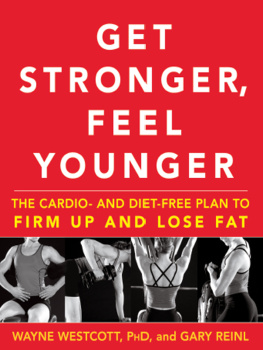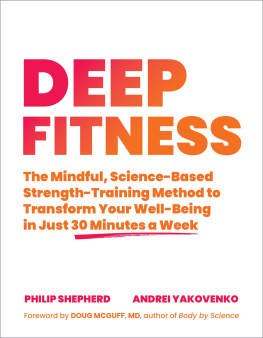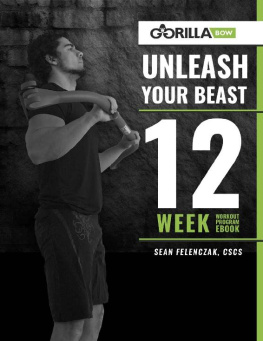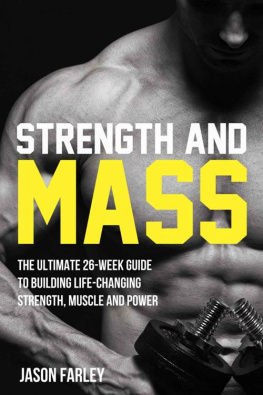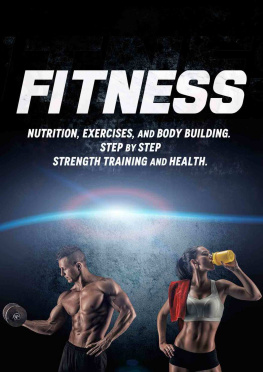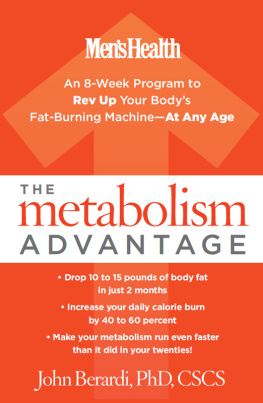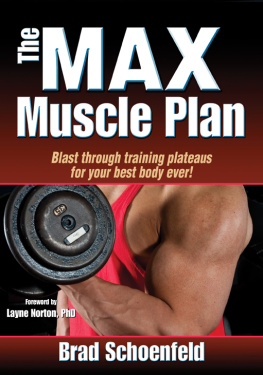About the Authors
Doug McGuff, M.D., became interested in exercise at the age of fifteen when he first read Arthur Joness Nautilus Training Bulletin (No. 2). His interest in exercise and biology led him into a career in medicine. In 1989, he graduated from the University of Texas Medical School at San Antonio and went on to train in emergency medicine at the University of Arkansas for Medical Sciences at Little Rock, where he served as chief resident. From there, he served as faculty in the Wright State University Emergency Medicine Residency and was a staff emergency physician at Wright-Patterson AFB Hospital.
Throughout his career, Dr. McGuff has maintained his interest in high-intensity exercise. He realized a lifelong dream when he opened Ultimate Exercise in November 1997 ( ultimate-exercise.com ). Over the past eleven years, he and his instructors have continued to explore the limits of exercise through their personal training clients at Ultimate Exercise.
In addition to his work at Ultimate Exercise, Dr. McGuff is a partner with Blue Ridge Emergency Physicians, P.A. He lives in Seneca, South Carolina, with his wife of twenty-five years and their children, Eric and Madeline.
John Little is considered one of the top fitness researchers in North America (Ironman magazine). He first learned of the principles of correct exercise from bodybuilding pioneer Mike Mentzer, when John was eighteen years old. Mentzer encouraged him to continue with his research, which resulted in Littles creation of the Max Contraction training method ( maxcontraction.com ). Little has authored twelve books on exercise and an additional thirty-eight books on philosophy (Eastern and Western), history, and martial arts. A graduate of McMaster University, Hamilton, with a degree in philosophy, Little has been published in every major fitness and martial arts magazine in North America. Throughout his career, he has worked alongside the biggest names in the industry, including Arnold Schwarzenegger, Steve Reeves, Lou Ferrigno, and Jackie Chan, as well as Mike Mentzer. He is also an award-winning documentary filmmaker, having produced and directed films for both independent companies and major studios such as Warner Bros.
In 2004, Little and his wife, Terri, opened Nautilus North Strength & Fitness Centre, where they continue to conduct studies on exercise and share the data with their personal training clients. Nautilus North has supervised in excess of sixty thousand one-on-one workout sessions. Little has continued to perpetuate the teachings and legacy of Mike Mentzer, carrying on Mentzers Heavy Duty column in Ironman magazine since Mentzers passing in 2001. He lives in Bracebridge, Ontario, with his wife of twenty years and their children, Riley, Taylor, Brandon, and Benjamin.
If you would like more information on the science of productive exercise, the authors welcome you to visit Body by Science online at bodyby science.net.
Acknowledgments
Special thanks go out to my coauthor, John Little. I am honored that you brought me in on this project, and I am grateful for all of your work translating our phone conversations into a treatise on physical training. To Ken Hutchins, thanks for devising the first protocol that raises intensity while lowering force. Thanks also to the late Mike Mentzer, who provided a hero in a time without heroes, and to Terry Carter, who pioneered time under load and once-a-week training during the early days of Ultimate Exercise. To the late Clay Brunson, thanks for bringing so much passion and a willingness to experiment to Ultimate Exercise. To Greg Anderson, owner of Ideal Exercise, in Seattle: your insights during hours of discussion helped to shape this book. To Drew Baye and Dr. Ellington Darden, thanks for your excellent websites and writings. To Ryan Hall, thanks for showing us the genetic reasons that one size does not fit all. To Bo Railey, thanks for your business advice and for putting on excellent seminars. To Ed Garbe, my manager at Ultimate Exercise, and instructor Sarah Cooper, thanks for your boundless energy and for keeping it all running. Finally, thank you, Arthur Jones: the man who started it all and whose writings set the course for my life.
Doug McGuff, M.D.
There are many people whom I would like to add to Dougs list. First in order would be Doug McGuff: your insights into global metabolic conditioning and the dose-response relationship of exercise are a work of genius and have advanced peoples understanding of the actual science of exercise immeasurably. I also acknowledge the contributions of our medical illustrator, Tim Fedak, whose excellent renderings have allowed for a deeper understanding of muscular function and human metabolism and Gus Diamantopoulos for his charts and diagrams on the nature of the inroading process. In addition, I must acknowledge all of the unheralded personal trainers who have been diligently applying their craft, keeping records, and seeking cause-and-effect relationships for decades. They include expert trainers such as Fred Hahn, Ann Marie Anderson, Doug Holland, David Landau, Terri Little, Cary Howe, Blair Wilson, Chris Greenfield, Daniel Craig, David Wilson, and Jeremy Hymers, who, along with the names Doug cited, represent the absolute top tier of personal trainers on the planet. I would also underscore Dougs acknowledgment of my late friend Mike Mentzer and point out that it was Mike who was the first to thoroughly examine the benefits and necessity of issues such as reduced training volume and frequency on a large-scale basis and who drew many meaningful conclusions from his research that have deepened our understanding of the science of exercise.
John Little
CHAPTER 1
Defining Health, Fitness, and Exercise
Strange as it may sound, fitness is a state that lacks a precise definition. Most of us use the term without really knowing what it is were talking about. The fitness industry offers no definitions, nor does the medical industry.
A similar problem arises when one attempts to obtain a valid definition of health. In preparing to write this book, we looked extensively into the scientific literature, including many medical textbooks, to seek out a definition. We were surprised to discover that the terms health and fitnesswhile bandied about liberally within the fields of medicine, health care, and physical traininghave never been given a universally agreed-upon definition. When examining his textbook from medical school, The Pathologic Basis of Disease, Doug discovered that while this book had no difficulty defining pathology, it never once presented a definition of health.
THE BALANCE OF CATABOLISM AND ANABOLISM
People routinely refer to health and fitness as if the two concepts were cojoined. The popular assumption is that as ones level of physical fitness rises, the level of health rises along with it. Unfortunately, no direct scientific link between these two conditions exists. The human body, you see, is never static; it is a dynamic organism that carries on a perpetual balancing act between breaking down (catabolism) and building up (anabolism). This is how your blood-clotting system functions, for example. It is continually breaking down and building up clots, keeping a balance between your blood viscosity and coagulability to ensure a smooth flow and still stem any bleeding that should occur (but not so aggressively as to produce clogged arteries and infarcts). Your pH balance, blood gases, hormone levels, electrolytes, fluid levels, and innumerable other complex processes are constantly shifting and changing as well within these catabolic and anabolic processes. Life, in essence, depends on this precise balance between a catabolic state and an anabolic state, and this balance is what defines the health of the organism.


